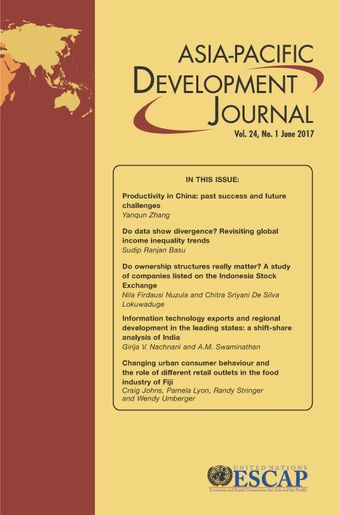-
Information technology exports and regional development in the leading states: A shift-share analysis of India
- Source: Asia-Pacific Development Journal, Volume 24, Issue 1, Dec 2017, p. 83 - 116
-
- 04 Dec 2017
Abstract
India has adopted a balanced growth strategy driven by its large internal market, which entails making a major commitment to the endogenous development model. Previously, the country’s development plans were built around the supply-side and import substitution approach. In the early 1980s, the economy of India experienced structural changes, as the gross domestic product growth rate steadily increased, and then in the early 1990s, the country leapfrogged into a development policy centred on information technology, which led to the development of a globally competitive information technology (IT) sector. IT has helped states in India to develop through intersectoral linkages with several services and the multiplier effect. This makes it interesting to review the impact of growth of IT on development in states where IT development is prominent. As states have not been equal beneficiaries, a shift-share analysis was carried out to arrive at these imbalances for the period 2004/05-2008/09 and 2009/10-2013/14. The results of a shift in the share show that regional variations in software exports can largely be attributed to a regional component. In addition, the results of ordinary least squares estimation point out that existing infrastructure is overstressed, namely that there is excessive pressure on teledensity, a shortage of power and a large population, which is making it difficult for regions to sustain a high level of specialization.





